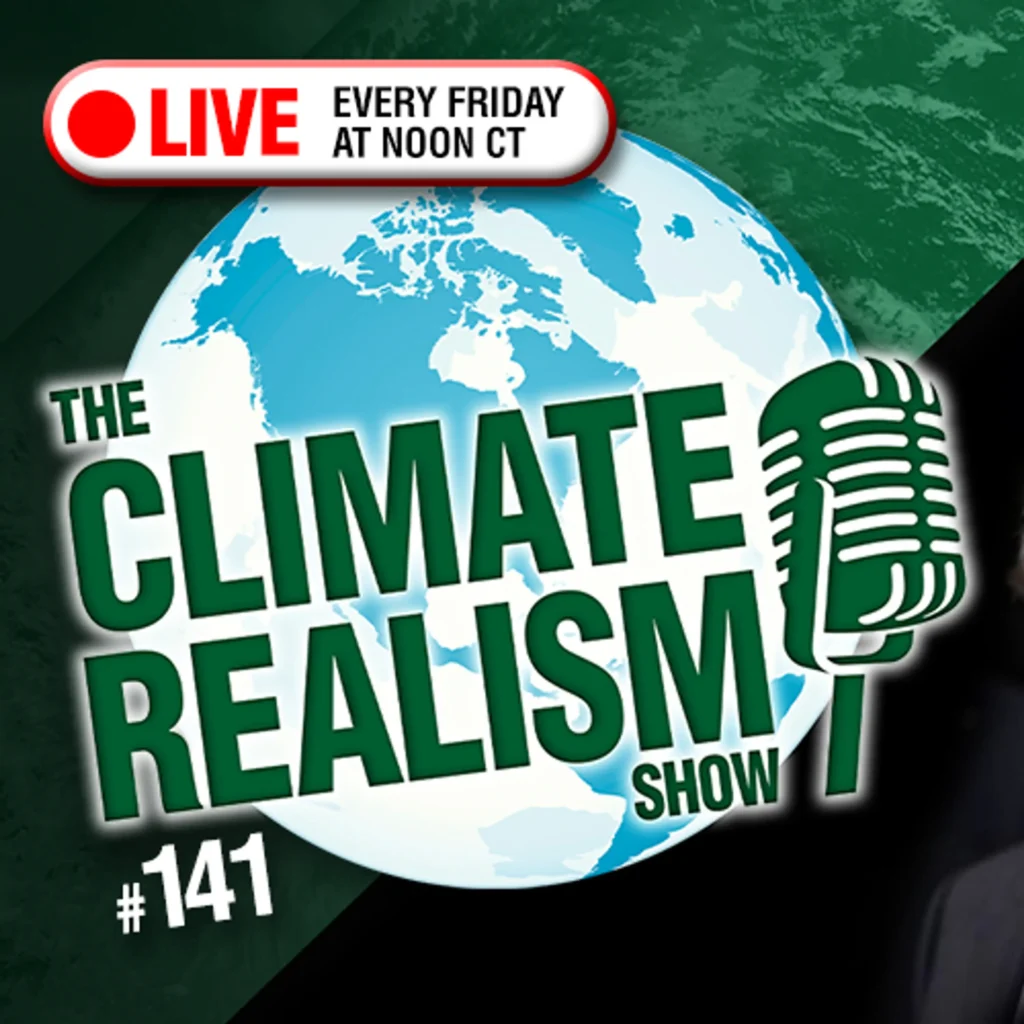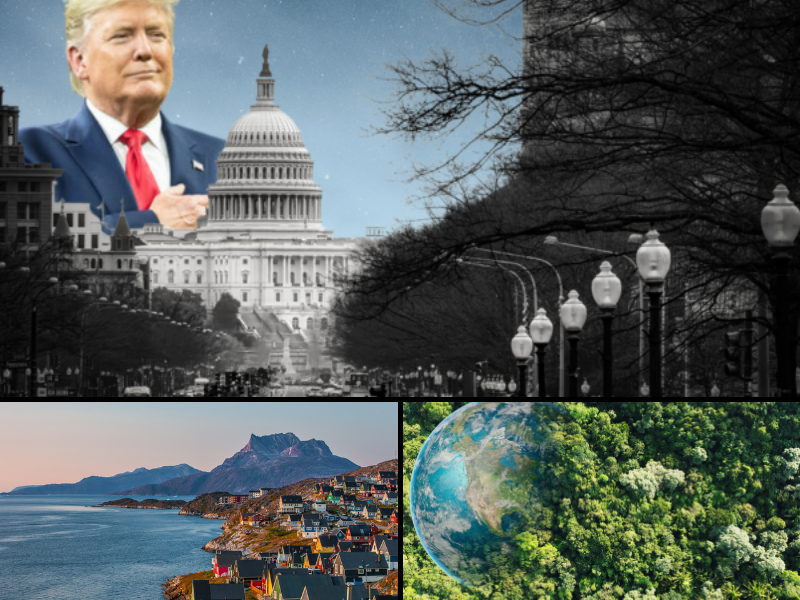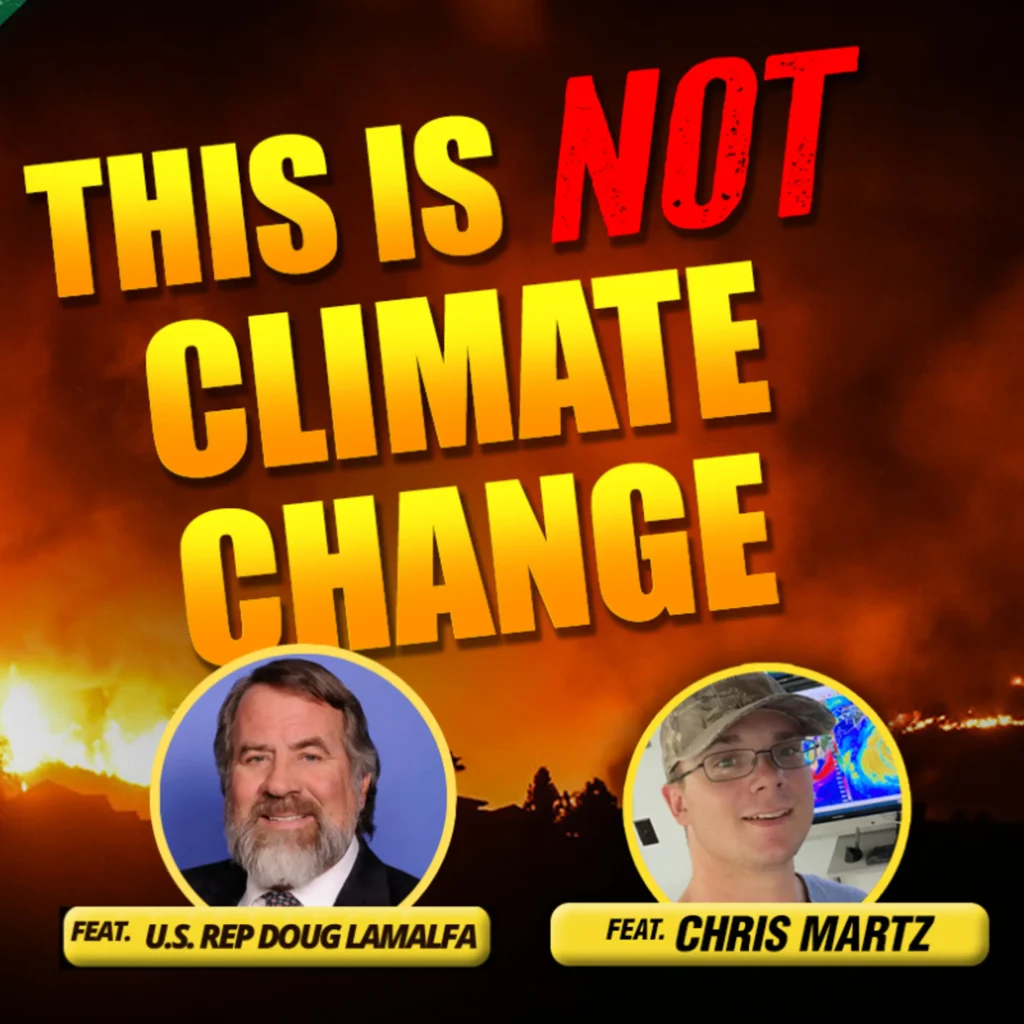The U.N. Intergovernmental Panel on Climate Change (IPCC) released its highly anticipated Sixth Assessment Report (AR6) on August 9, to much doomsaying and alarm. Though its findings had been previewed for weeks, to say it dominated headlines is to understate the case. It sucked the air out of the entire atmosphere.
Had Gov. Andrew Cuomo of New York not resigned amid allegations of sexual abuse, the IPCC report might have been the only story to receive significant coverage this week in almost every international, national, regional, and local media outlet.
The headlines from The Atlantic (“It’s Grim“), BBC (“Climate Change: IPCC Report Is ‘Code Red for Humanity'”), and the Guardian (“Climate crisis ‘unequivocally’ caused by human activities, says IPCC report“), capture the tenor of the coverage, to wit: “The World Is Ending, and You Are to Blame!”
That this report is sparking so much dire, uncritical coverage would shock the conscience if any scientific or journalistic standards remained, but they don’t. The report offers very little that is different from past reports. Any new, “shocking” findings it does offer are based on an incomplete assessment of the myriad factors that drive climate change and admittedly flawed climate models.
Headlines shout AR6 declares humans have unequivocally caused dangerous climate change. That’s not news. The IPCC made the same declaration in its AR5 report in 2014, and earlier reports said it was virtually certain humans had caused global warming. You can’t get more unequivocal than unequivocal, so AR6’s core headline-stoking conclusion, that humans are causing dangerous climate change, is not news but merely reiterates what previous IPCC reports incorrectly claimed.
To their credit, previous AR reports acknowledged that natural factors—the Sun, clouds, ocean currents, etc.—play at least some, albeit poorly understood, role in climate change. AR6 jettisons almost all natural factors as having any but the most marginal of effects on the climate. If you read only AR6’s summary for policymakers, you wouldn’t know clouds existed unless humans caused them by creating aerosols. Yet water vapor is by far the dominant greenhouse gas, accounting for more than 97 percent of all the greenhouse gases in the atmosphere, and clouds have huge long-term and short-term effects on surface temperatures. The IPCC acknowledged as much in previous AR reports, admitting climate models only poorly account for the role changes in cloud cover play in climate change.
AR6 virtually ignores any effect the Sun has on climate change. The report barely acknowledges solar irradiance as having any role at all in climate change, in a graphic on page SPM-8 (Summary for Policy Makers). No mention of solar cycles, which we know from history correlate with climate changes. Nor does the report even mention that increases and decreases in cosmic rays resulting from solar fluctuations affect cloud cover and thus temperatures. Except for volcanoes, all other factors, such as large-scale decadal ocean circulation patterns, are lumped into a category called “Internal Variability,” to which AR6 attributes almost no effect on climate change.
This is truly atrocious nonsense. Even AR6 admits temperatures, sea level rise, droughts, tropical storm numbers and intensities, wildfires, etc., have all been as high and severe at other times in the past 200, 2,000, 6,000, 12,000, or 125,000 years—pick your time period for the claimed effect—as they are at present. If natural factors caused equivalent or even more rapid and severe climate effects in the past, with no human help, there is no logical reason to think nature is playing no role in current climate change. The IPCC authors don’t understand well the natural factors that caused past climate changes and they can’t model them, so they simply assign natural factors no role in current climate change. Once the IPCC arbitrarily rules out all factors other than the ones it can model and thus has decided to study, of course humans are going to appear to be to blame for climate change.
Speaking of modelling, at the foundation of AR6’s claims about human-caused climate change is the newest generation of climate models. Page one of the AR6 technical summary states,
This report assesses results from climate models participating in the Coupled Model Intercomparison Project Phase 6 (CMIP6) of the World Climate Research Programme. These models include new and better representation of physical, chemical and biological processes, as well as higher resolution, compared to climate models considered in previous IPCC assessment reports. This has improved the simulation of the recent mean state of most large-scale indicators of climate change and many other aspects across the climate system.
The fact that AR6’s climate projections are based on CMIP6 models is a defect, not a virtue. Just last week, as I reported in CCW 407, the scientists and modelers who constructed the CMIP6 models were forced to admit they grossly overestimate past and projected warming, doing even worse than previous generations of models.
“[T]he climate models that help [climate scientists] project the future have grown a little too alarmist,” reported Science last week. “Many of the world’s leading models are now projecting warming rates that most scientists, including the model-makers themselves, believe are implausibly fast.”
“In advance of the U.N. report, scientists have scrambled to understand what went wrong and how to turn the models … into useful guidance for policymakers,” writes Science. “‘It’s become clear over the last year or so that we can’t avoid this,’ says Gavin Schmidt, director of NASA’s Goddard Institute for Space Studies.”
If the models must be fixed before they can deliver “useful guidance for policymakers,” why did IPCC use them?
The most fundamental prediction climate models make is temperature changes, which are supposed to be driving all the other supposedly catastrophic climate changes. Yet for decades climate models have proven unable to get temperatures right. Previous generations of models overstated warming, and the newest generation is making even hotter projections, yet the IPCC claims these models are better? Not in any normal sense of the word “better.”
Worse still for anyone hoping to derive knowledge about climate change from the IPCC, every new generation of climate models seems to do at least as poorly as the previous generation of models, as displayed quite clearly in Table 1.2 in AR6 Chapter 1, pg. 47. The earliest, less complex climate models (pre-IPCC), not hampered by unverified assumptions about various asserted feedback mechanisms assumed by scientists and modelers to amplify warming, estimated a doubling of atmospheric carbon dioxide would result in between 2.0 and 3.5℃ of warming. Measured temperatures have shown these earliest models were too sensitive to carbon dioxide changes, but their temperature projections have come closer to tracking actual temperature changes measured on land, by weather balloons, and by satellites than their later counterparts.
In 1990 the IPCC’s first model simulations estimated a doubling of carbon dioxide would result in between 1.9 and 5.0℃ of warming. In the fifth generation of models, the range narrowed, with the CMIP5 models estimating a warming of between 2.1 and 4.7℃. The estimated temperatures were still too hot, but at least the range of estimated temperatures seemed to be narrowing, indicating a modicum of progress. Whatever progress was made by CMIP5 has apparently been squandered in the CMIP6 models, which now project between 1.8 and 5.6℃ warming. Hot and hotter.
Being charitable, one might be tempted to say, “It’s not the IPCC’s authors’ fault. The problems with the CMIP6 models only came to light last week, and it was too late to derail the release of AR6,” a document that had already been delayed by a year because of the pandemic. This charitable interpretation, however, is unwarranted. Climate realists such as I have been warning for more than two years that the CMIP6 models were performing worse than the CMIP5 versions.
Science, not a journal thought to be staffed by climate skeptics, warned in April 2019 there was a problem with the CMIP6 models: they were “showing a puzzling but undeniable trend. They are running hotter than they have in the past.”
In July of 2020, Yale Climate Connections warned about flawed temperature projections being delivered by CMIP6 model temperature simulations: “For the past year, some of the most up-to-date computer models from the world’s top climate modeling groups have been ‘running hot’—projecting that global warming may be even more extreme than earlier thought. Data from some of the model runs has been confounding scientists because it challenges decades of consistent projections.”
Over time, scientists’ understanding of the equilibrium climate sensitivity to a doubling of carbon dioxide in the atmosphere should have improved, leading to better model inputs and outputs. The very opposite has occurred.
The truth is, the IPCC knew its earlier models were projecting too much warming, and as the results came in showing the CMIP6 models were even farther away from reality, the IPCC had plenty of time to change course. It didn’t.
Why? Because the Intergovernmental Panel on Climate Change is, as the name implies, a government body, not a scientific endeavor. Never once has the IPCC undertaken an honest assessment of either all the factors, both natural and anthropogenic, that may drive climate changes, or an honest weighing of the positive and negative consequences possibly flowing from a modest warming, or of the relative merits of a world with or without fossil fuels. Governments didn’t want uncertainty, and certainly not honesty.
They wanted a mandate to control the world’s economy, and the IPCC has proven once again more than willing to give it to them.
— H. Sterling Burnett
SOURCES: Intergovernmental Panel on Climate Change; American Thinker; Newsbusters
IN THIS ISSUE …
NO LONG-TERM DROUGHT TREND IN EUROPE, STUDY SHOWS … CHINA SCRAPS CLIMATE PLANS, GOES BIG ON COAL … OCEAN CIRCULATION PATTERNS CONTROL SEA LEVELS
NO LONG-TERM DROUGHT TREND IN EUROPE, STUDY SHOWS
A study published in the peer-reviewed International Journal of Climatology finds no evidence for a long-term drought trend across Europe amid modest global warming.
The research was a collaborative effort undertaken by scientists at universities and research institutes in Spain (lead author), Egypt, France, Ireland, Italy, the Netherlands, Oman, Portugal, and the United Kingdom.
The scientists collected, collated, and analyzed data on long-term variability and trends in meteorological droughts across Western Europe from 199 stations from 1851 through 2018. Using this data, they analyzed both the number and severity of droughts occurring across Western Europe over the period of study.
“Results reveal a general absence of statistically significant long-term trends in the study domain, with the exception of significant trends at some stations, generally covering short periods.”
The study found droughts in Western Europe have been spatially diverse, with variability in the number and intensity of drought being the dominant pattern, instead of a homogeneous increase or decrease across the region or in any particular area over time.
“In general, drought episodes experienced in the last two or three decades have precedents during the last 170·years, emphasizing the importance of long records for assessing change,” the authors write.
SOURCE: International Journal of Climatology (behind paywall)
CHINA SCRAPS CLIMATE PLANS, GOES BIG ON COAL
China is the world’s largest emitter of carbon dioxide and growing, producing more emissions than all the developed nations of the world and India combined.
Not satisfied with that, China’s Politburo in late July eased restrictions on carbon dioxide emissions, which President Xi Jinping has blamed for slowing China’s growth, in response to rising energy prices and power shortages.
Less than a week later, China’s National Development and Reform Commission, the country’s top economic policy planning body, announced it was reopening 53 previously shuttered coal mines. The move is meant to increase availability of coal and ease price increases.
“The decision comes as China seeks to tame thermal coal prices that have jumped about a third this year and hit a record in May amid supply disruptions and strong demand that’s the result of extreme summer heat and a rebound in industrial output,” writes Bloomberg.
China’s Paris climate commitment to peak its greenhouse gas emissions by 2030 is seemingly fading into the distance, in practical terms if not in the rhetoric China spews at international climate meetings.
SOURCES: Bloomberg; Bloomberg; BBC
OCEAN CIRCULATION PATTERNS CONTROL SEA LEVELS
Using measured data instead of climate model simulations, research published in Nature Climate Change shows natural factors, in particular large-scale ocean circulation patterns, drive changes in coastal sea levels.
Large-scale ocean circulation patterns, and the causes and consequences of their shifts, are not well understood and thus are not accounted for well in climate models. The researchers involved in this study used a “global set of tide-gauge records over nine regions to analyze the relationship between coastal sea-level variability and open-ocean steric height [the vertical distance between two surfaces of prescribed pressure], related to density fluctuations.”
On annual and decadal scales, sea-level variability follows open-ocean steric height variations along most coastlines, the research indicates.
The scientists’ analysis of the large data set shows ocean circulation patterns alone account for 91 percent of coastal sea level change. Land subsidence or heaving (swelling or rising) and increased runoff from land (glaciers and channelized waterways) contributed modestly to coastal sea level changes as well. If this study is correct, these three factors alone account for almost all, if not all, change in coastal sea levels since 1960.
“We find ocean circulation has dominated coastal sea-level budgets over the past six decades, reinforcing its importance in near-term predictions and coastal planning,” the authors write.
SOURCE: Nature Climate Change (behind paywall)





